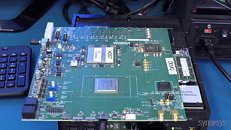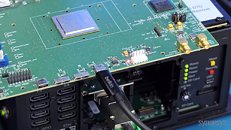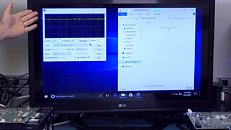Monday, May 28th 2018
Synopsys Demonstrates USB 3.2 with Throughput Speeds Up to 20 Gbps
Synopsys has successfully carried out the world's first USB 3.2 demonstration. The host system was running on a Windows 10 operating system with the standard USB drivers without any modifications whatsoever. The USB 3.2 host controller was implemented on a HAPS-80 FPGA platform connected to the PHY board through a Type-C connector. The target system, which ran on Linux, used an identical hardware setup as the host system with the exception that it was configured as a Mass Storage device. The PHY employed in the demonstration was manufactured on the FinFET process and capable of operating at speeds up to 10 Gbps per lane. Therefore, Synopsys's solution consisted of pairing both lanes to achieve a combined throughput of 20 Gbps. The company also emphasized the fact that USB 3.2 doesn't require the use of special cables. For the demonstration, they utilized a pair of conventional Belkin USB 3.1 Type-C cables that you can find at your local Target store.Demostration video on Youtube
Source:
Synopsys



5 Comments on Synopsys Demonstrates USB 3.2 with Throughput Speeds Up to 20 Gbps
Now we will need another round of cards/chipsets though. ;)
Considering Intel already appears to be gimping USB 3.1 to 8Gbps instead of 10Gbps (by using only one PCIe 3.0 lane equivalent of bandwidth), maybe they'll gimp these too?
Looking at ASMedia, the ASM1142 could do 10Gbps if two PCIe 2.x lanes are used, but not if a PCIe 3.x lane is used (the chip supports both options), although only one port at a time would work at 10Gbps. The ASM2142 connects over two PCIe 3.x lanes and would obviously allow for at least one port at full 10Gbps due to this, but not both at once. Finally the ASM3142 supports something ASMedia calls "multiple INs" which they claim is needed to actually reach the 10Gbps potential of USB 3.0, so it might be that a lot of implementations of USB 3.0 are all limited to speeds below 10Gbps...
Got to love technology that doesn't live up to the claimed performance...
Oh and dont forget your gold card, your banker, and HIS gold card too, cause your gonna need all three :)